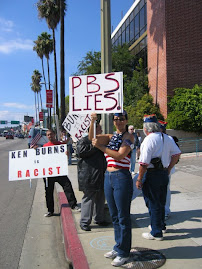Francisco Romero charges the Oxnard Police Department with retaliatory intimidation as he contests five citations for his participation in a march against police brutality on October 13, 2013.
An obscure 1975 California Supreme Court case, Murgia v. Municipal Court, serves as the basis for his complaint. In this decision, the justices unanimously found that the Kern County Sheriff's Department violated the equal protection clauses of the US and state constitutions against selective enforcement.
In its ruling, the court recognized the context of the case in which Jose Guadalupe Murguia [spelled correctly], an organizer, and his fellow United Farm Workers unionists, had been invidiously (unjustifiably) targeted by law enforcement. But when Teamsters—who agreed to sweetheart contracts with growers—and private agents of the agricultural industry violated the law, sheriff deputies chose not to take action.
As in Murgia, circumstantial evidence validates Romero's claim.
For example, as a member of Toda Poder Al Pueblo (All Power to the People), a grass roots civil rights organization in Ventura County, Romero previously participated in demonstrations against police brutality.
Prior to the October 13 protest for which the OPD cited Romero, a larger event occurred the year before on October 22, 2012 as part of a protest titled A National Day of Action Against Police Brutality.
About a week before this event, OPD officers killed Alfonso Limon in the barrio community of La Colonia. He was an innocent bystander who walked into a confrontation between police officers and an armed suspect.
Limon's death horrified a constituency within Ventura County already heated by the OPD killings of Robert Ramirez in June of 2012 and Michael Mahoney that August.
These tragedies and a history of tension with the police prompted close to, if not over, 1,000 people to join the National Day of Action in Oxnard.
These protestors assembled at a park in La Colonia, and then marched to the site where police officers inflicted 21 distinct gunshots at Limon. After a stop at this scene, the demonstrators continued their march to the OPD station.
On the way, the demonstrators clogged traffic on the city's main boulevard.
Once at OPD headquarters, half the crowd expressed its fury at the front of the building. The others jeered officers through the south-side gate of the station's parking lot.
Subsequently, residents in dialogue with the OPD leadership commended Police Chief Jeri Williams for the control she commanded over anxious officers, many outfitted with helmets and batons, while the station was under siege.
While the OPD publicly recognized the right of people to peacefully demonstrate, it also communicated its intention to protect the safety of pedestrians and motorists.
This is the context of Romero's case.
In an unsuccessful Murgia motion by Romero to have the citations dismissed, Commissioner Anthony Sabo ruled that the OPD did not issue the jaywalking citations with invidious discrimination as there ". . . was no showing the Defendant was targeted for prosecution for any reason other than, to the Defendant's misfortune, officers were able to identify him and observe his actions on video."
This is an intriguing ruling as the audio in the OPD surveillance video obtained by Romero's attorney, James P. Segall-Gutierrez, under a Murgia discovery motion, evidences the police identifying Romero by name as well as other protesters in the October 13 march who were not cited.
Supporters of Romero feel that the OPD would have overlooked his minor offense if he had not been a prominent critic of its conduct.
Furthermore, several of those identified in this demonstration previously and regularly denounced the OPD at the televised meetings of the Oxnard City Council, often in the presence of the police chief and her staff.
Even family members who had lost loved ones at the hands of OPD officers openly participated in all of the aforementioned demonstrations and city council meetings. But they were not cited.
The selective enforcement argument of Romero seems to have been enhanced recently as Elliott Gabriel, also a member of Todo Poder Al Pueblo, received two citations for impeding traffic as he rode a bicycle alongside an April 11, 2015 march of 100 people protesting an OPD officer's killing of Meagan Hockaday, 26, during a domestic violence call on March 28, 2015.
Gabriel claims that he was only person cited in this demonstration.
Moving forward in a trial scheduled to begin in August, Romero's attorney will argue that the OPD entrapped his client because an unlawful assembly was not declared. Segall-Gutierrez will also contend that Romero violated vehicle codes for which he was cited out of necessity and for the safety of the participants in the protest.
If the trial is not decided in Romero's favor, he vows to appeal the case under the Murgia motion against selective enforcement to the highest court of the land if necessary.
C/S
fbp
Ventura County Star; Amigos 805; LatinoLA
Sunday, July 12, 2015
Subscribe to:
Comments (Atom)


